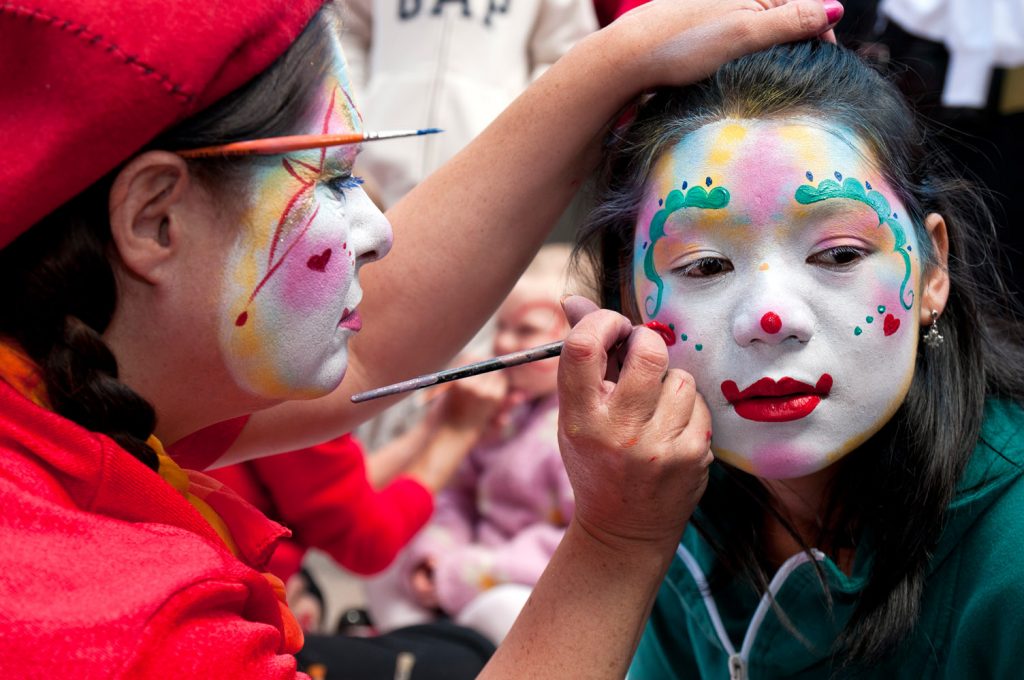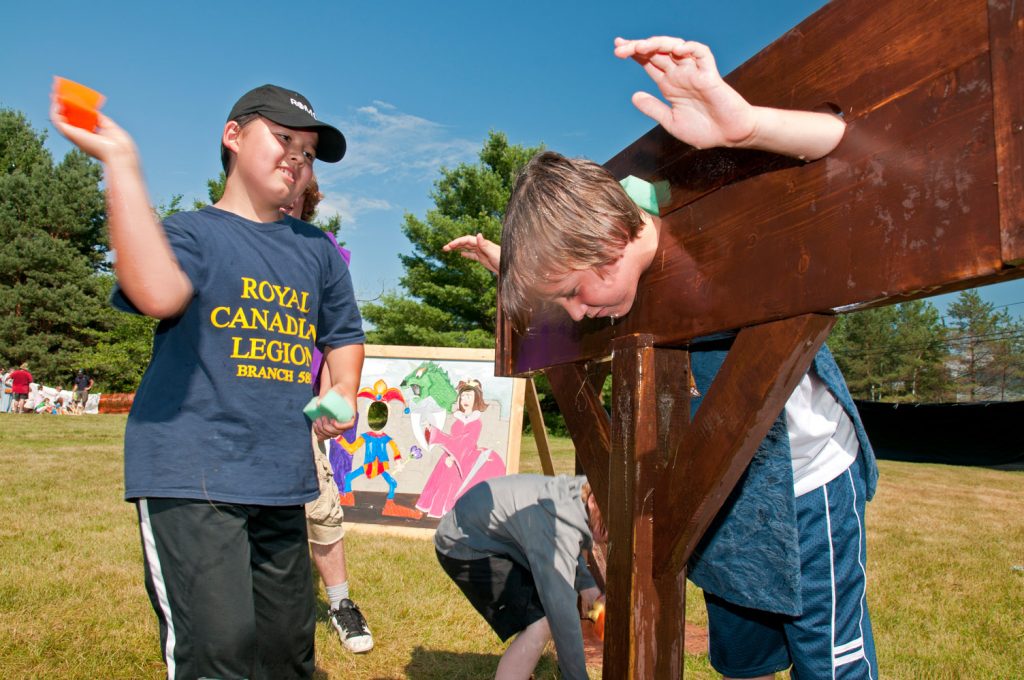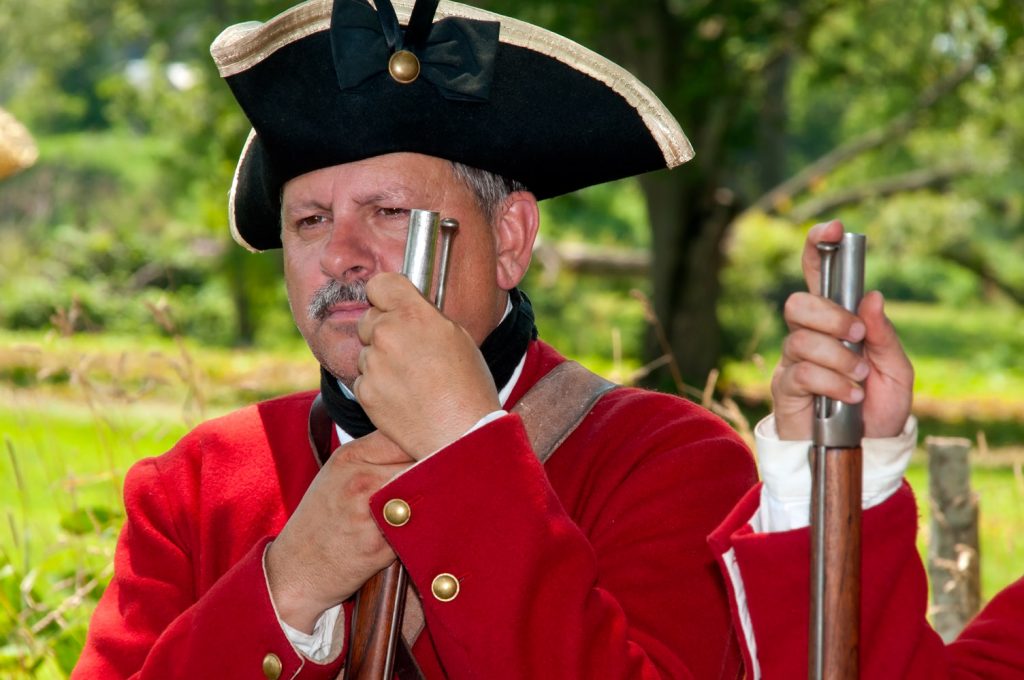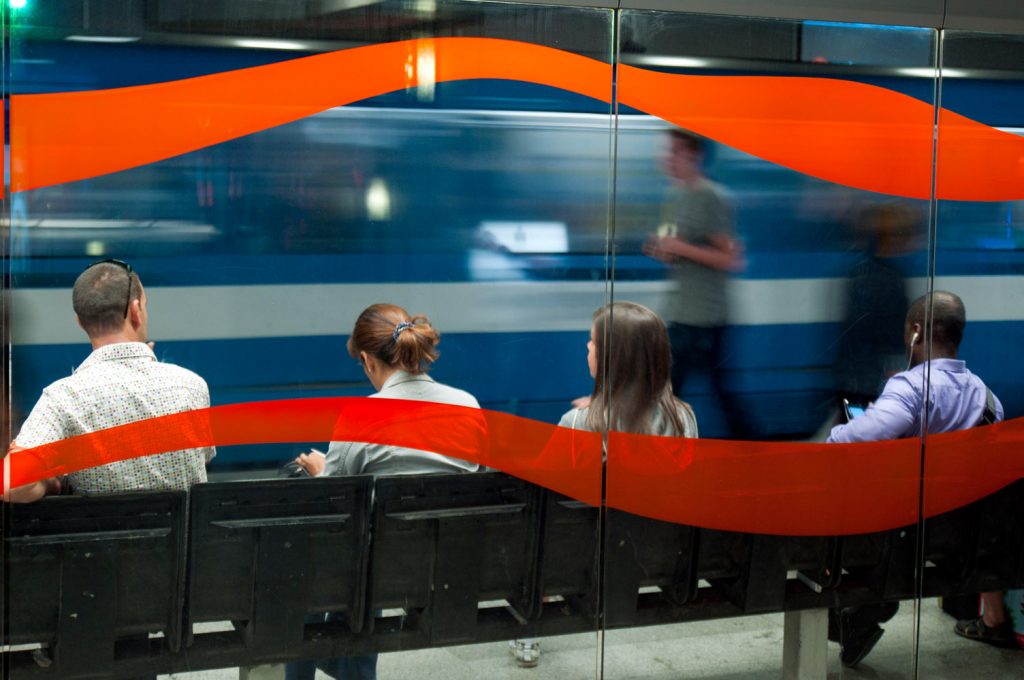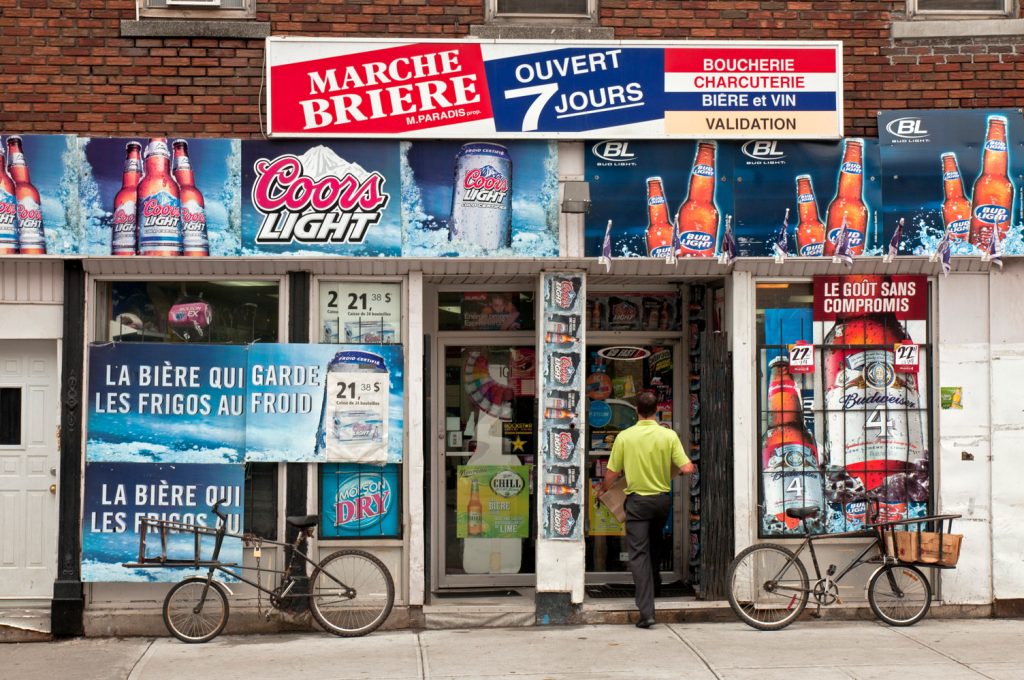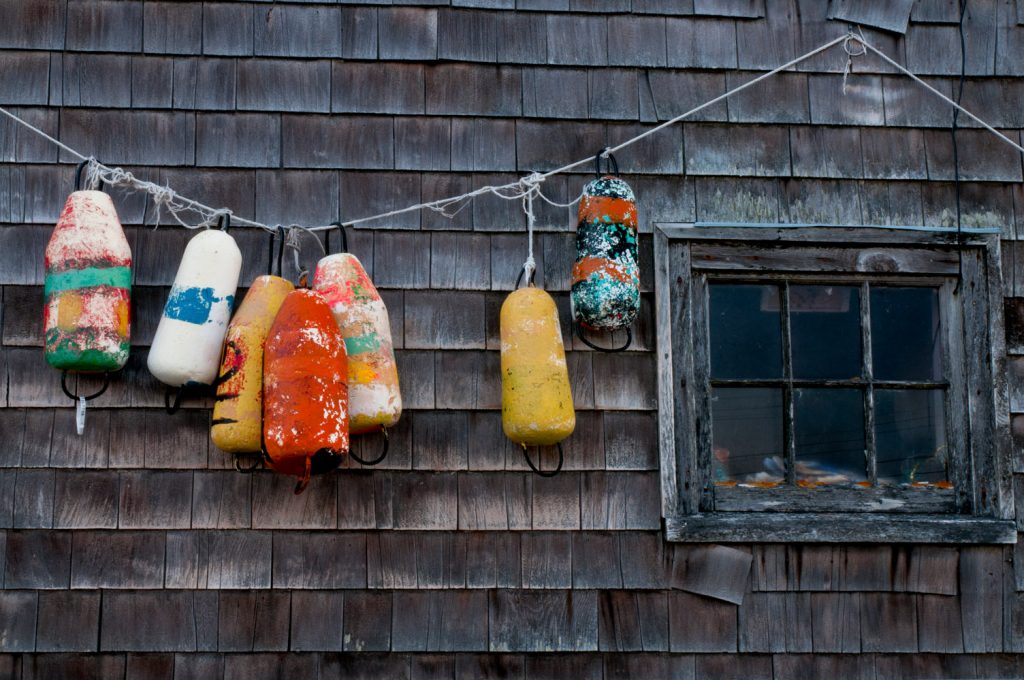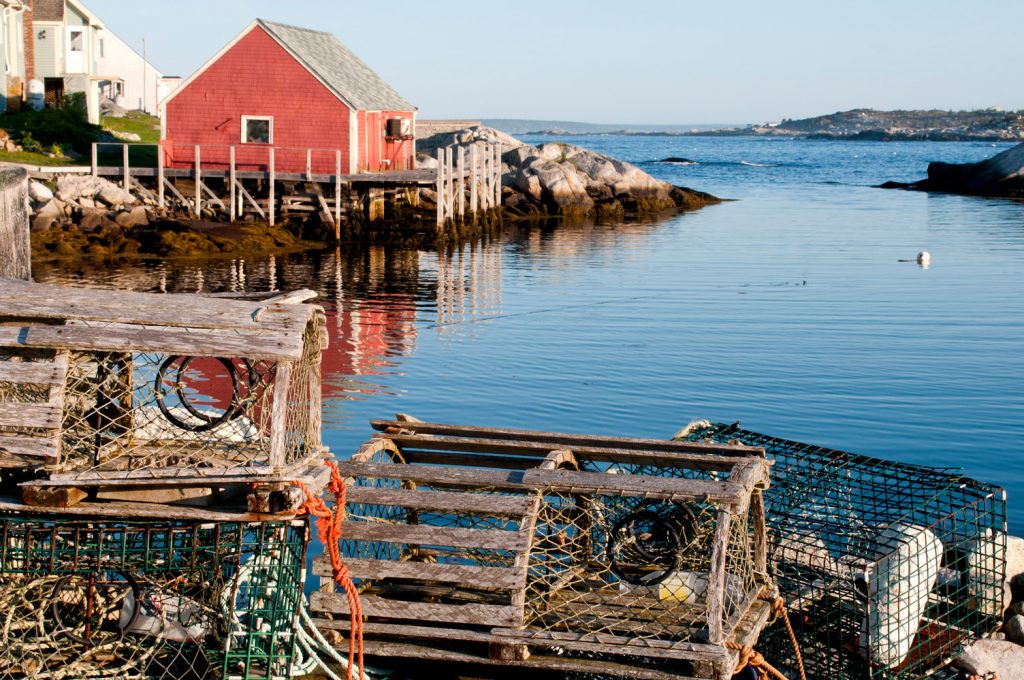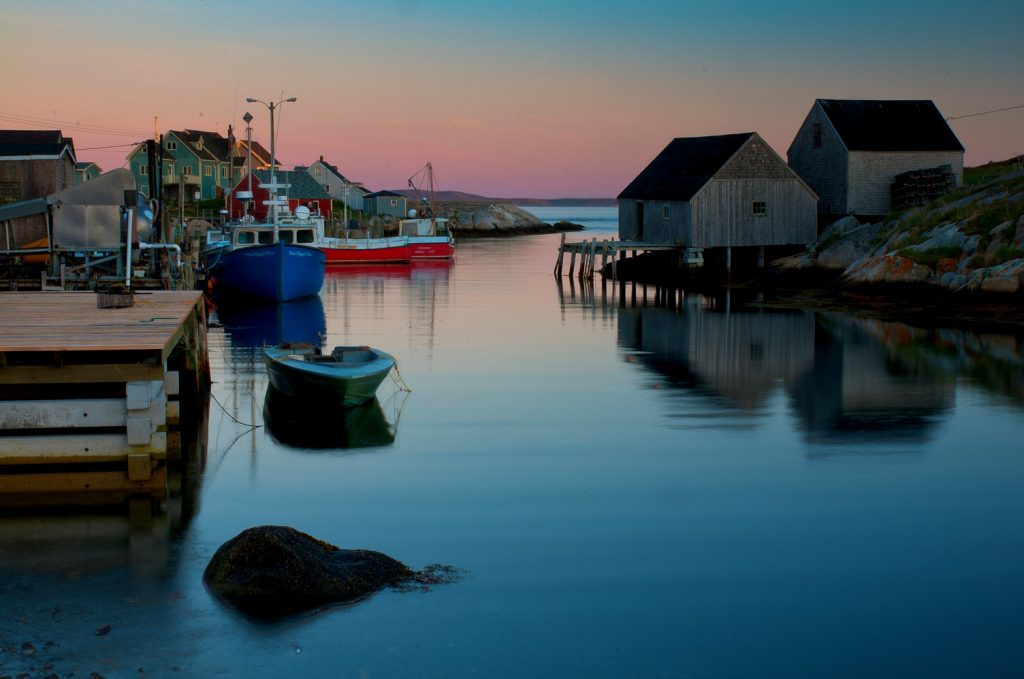Author: rmcguire
Into the bright sun
One mistake that beginner photographers often make is posing people in bright sun with the sun directly overhead or behind the photographer.
While this can result in interesting light when the sun is very low in the sky at the beginning or end of the day, most of the time it just results in harsh shadows and washed out highlights. And subjects often squint in the bright sun, making them less attactive.
A better solution, where possible, is to photograph subjects in open shade. This can be against a north-facing side of a building, or under a picnic shelter or anywhere else that’s not in the direct sunlight, but where reflected sunlight can enter from all directions to illuminate the scene. The shade of trees can be used, but often there’s a dappled light coming through breaks in the leaves that can ruin the shot.
Some photographers use translucent white panels between the sun and the subject. This works really well, but usually involves an assistant to hold the panel, or some kind of set-up with light stands to suspend the panel. Great light, but a little impractical for a lone photographer looking for candid shots.
Often there’s simply no alternative but to shoot in direct sunlight. In such cases, it’s best to try to put the sun behind the subject (but not aiming right at the lens, where it will cause flare), and then to light the subject with a fill flash. The fill flash will even out the light a bit, softening it in effect. It fills in shadows, like those under a hat brim, or around someone’s eye sockets and nose. It also increases the light on the subject in cases where the sun is behind them, so they aren’t silhouetted, but you can still sometimes get nice rim light from the sun behind.
Fill flash is one of the few times when the on-camera pop-up flash works reasonably well. That’s because it’s just fill — it’s not the main source of light. If you use a hot shoe flash, you can often leave the flash on the camera, with or without a diffuser. Sometimes you’ll want to reduce the flash output a little so the effect of the flash is less noticeable.
Below are a few shots where I used fill flash to advantage:
July 1 Canada Day in Ottawa is often very sunny, and this is especially the case shortly before noon. It’s a good time to take pictures of people celebrating, but harsh sunlight often makes people’s faces very contrasty with light and shadows.
In this picture of a girl getting her face painted, the sunlight was extreme, but was coming from behind the girl. Using a fill flash softened the light and shadows on her face, and almost gave the impression of shooting in open shade. In a few pictures in this series, my flash failed to fire, and the result looks very different with harsh shadows across her face. Using a fill flash in bright sunlight, it’s important to keep in mind the sync speed of the camera. On my Nikon D300, the sync speed is 1/250 of a second. Sometimes, especially when you want to soften your background, you need to use a higher speed than that. In such cases, it’s essential to make sure your camera is set to allow the flash to use Auto FP High Speed Sync, a setting that allows the flash to be used at faster shutter speeds.
The photo above was taken this month at the Medieval Festival in Osgoode, Ontario, just south of Ottawa. Here I was right in blazing afternoon direct sunlight, and there was no choice for this shot. I got down low and shot upwards so as to get a bit of the “victim’s” face and better show the action. And I used a fill flash in my hot shoe with no diffusion, and cranked it up an extra EV (f-stop). While it got rid of some of the harsh shadows on the subject, it still wasn’t enough to eliminate the shadow under the rim of the hat of the boy throwing a wet sponge. It’s not easy to overpower the light of the bright sun with a single flash.
In this picture of a soldier waiting to do battle in a re-enactment of a battle from the Seven Years War at Ogdensburg, New York, I also used a fill flash. The effect here is very subtle, and it would be difficult to tell just from looking that a fill flash was used. You still see a sharp contrast on his shoulder (viewer’s left) between the sunlit and shaded areas. In this case, the background was much brighter, and all the fill flash did was add a little light to the subject to reduce the gap in exposure between subject and background. Still, it improves the photo.
The sun is a very powerful element in outdoor photography, but sometimes we need to use a little bit of “sun” from our camera bags to control the light a little better.
Le Métro, Montreal
Dépanneur, Montreal
Photo flâneur
One of my photo contacts looked at one of my shots from a recent trip to Montreal and suggested I was becoming a “veritable flâneur.”
In Quebec, the term “flâneur” has negative connotations — like vagrant, vagabond or loiterer. Some stores even post signs saying “defense de flâner,” suggesting they don’t want kids hanging outside the doorway after making their purchases.
In Europe, the term “flâneur” has other connotations. My photo contact referred me to the Wikipedia entry discussing the term “flâneur” as Charles Baudelaire intended it, meaning more of a “gentleman stroller of city streets” or someone who is a detached observer of city life. The article goes on to discuss how street photography has become a modern extension of the 19th century urban observer.
Montreal is a wonderful city in which to be a “flâneur” in Baudelaire’s sense of the term. It has such a vibrant mix of cultures set against exciting architecture, both modern and old.
As for street photography, Montreal presents a unique challenge. Quebec has the most restrictive laws against street photography in North America. Essentially, you can be sued if you publish a photo of someone without their consent and if they are identifiable. The exception, which seems to allow news photography, is if the photo serves the public interest (whatever that means). It’s a vague term that presumably suggests that art and documentation of city life are not in the public interest, whereas news reporting is. Whether or not a court would actually rule that the photo damaged a person is beside the point — few photographers can afford to go to court, so the law instead becomes a tool of blackmail. It’s as though the fundamental freedom of expression guaranteed by 2(b) of the Charter of Rights and Freedoms has only limited validity in Quebec.
Of course privacy is also a right, and I’ve seen some street photographers who cross the line in that regard. But I tend to think that if a person is doing a public activity in a public place, they should be fair game for a documentary style of photographer.
Being unprepared to challenge Quebec’s law, I reluctantly change my photography style in Montreal. I tend to shoot people in ways that they are more anonymous, either by using motion blur, or photographing from behind. And I take more pictures of buildings and non-human subjects. That’s not to say I’ll always obscure people’s identities if they’re doing a public activity in a public place, but I usually err on the side of caution. And sometimes the results work well.
Hanging floats, Peggy’s Cove, Nova Scotia
Lobster pots, Peggy’s Cove, Nova Scotia
Peggy’s Cove, Nova Scotia, at dawn
Accessing a less common point of view
In an earlier post, I suggested that good photographic technique and creativity were only part of what makes a good photo. Another key ingredient is access to interesting subject matter.
This can mean flying off to a distant corner of the globe to visit a remote Asian monastery. Or, often, it can be a subject much closer to home that the photographer has unique access to because of his or her job, family, or friendships. When you think about it, most people have access to something in their lives that other people don’t see, and this can make a good photographic subject. It can be something as seemingly mundane as an inside view of a factory or a farm or other place of work. Provided you’re allowed to take photos, it may be a chance to take something that most people don’t see, allowing you to present some unique images.
Many thousands of visitors to Ottawa visit Canada’s beautiful Parliament buildings every year, and many of them take pictures of the Centre Block and Peace Tower. It’s a beautiful view, and as long as their photographic technique is good, the picture will look good. Only a much smaller number will come away with unique-looking pictures as the result of creatively using a different point of view or technique to create an unusual photo. Very few, however, have access to much more at Parliament than the main public areas.
In my day-to-day work, I often see behind the scenes in Canada’s political process, and occasionally I’m allowed to take pictures.
I admire the photography of Ottawa photographer Jean-Marc Carisse, who I’ve met on several occasions. Carisse was photographer to such Canadian Prime Ministers as Pierre Trudeau and Jean Chrétien and he’s often photographed international leaders when they visited Ottawa or when Canadian leaders travelled. One of my favourite Carisse photos shows Chrétien and Bill Clinton playfully climbing a garden railing to give the media the slip. I know some of the regular news photographers were envious of Carisse’s access, which enabled him to get pictures that were not accessible to the media. Indeed, the title of Carisse’s coffee table book is Privileged Access with Trudeau, Turner and Chrétien. Carisse is a talented photographer, but his work owes much to that privileged access.
While I don’t have Carisse’s skills or the privileged access he once had, I’m occasionally called upon to take pictures of Liberal Leader Michael Ignatieff at various events. Often these are public events where he’s delivering a speech at a poorly lit podium — hardly the kind of scene that lends itself to a Carisse-style photo.
Recently, on May 12, Mr. Ignatieff’s birthday, his wife and his staff organized a surprise birthday party for him at Stornoway, the official residence of the Leader of the Opposition. I was pleased to be asked to take photos at the party, and I had a lot of fun taking candid pictures of his staff socializing. When people are having fun, they are often more willing to be photographed, as long as they trust that you won’t embarrass them by using less-than-flattering pictures.
When the Leader arrived home with his wife, he was caught by surprise for the second year in a row. He was good natured about it, and spent a while socializing with staff and blowing out his birthday candles. But, this happened to be the night of the seventh and deciding hockey playoff game between the Montreal Canadiens and the Pittsburgh Penguins. And many of the guests were already watching the game on TV.
Mr. Ignatieff is well known as an intellectual, but it’s less known that he’s a rabid sports fan. Still wearing his suit, like his guests, he and his wife Zsuzsanna sat in front of the TV to cheer the Canadiens to their 5-2 victory. Bouncing my flash from the ceiling of the little room at the historic Stornoway house, I shot a few pictures of them engaged in the game. It was a chance to see a side of Mr. Ignatieff that the public doesn’t see.
One of those shots was used by Globe and Mail columnist Jane Taber in her blog. I have a long way to go before my photos can match those of someone like Carisse, but the experience was a lesson in the value of using uncommon access to get photos from an unusual point of view.
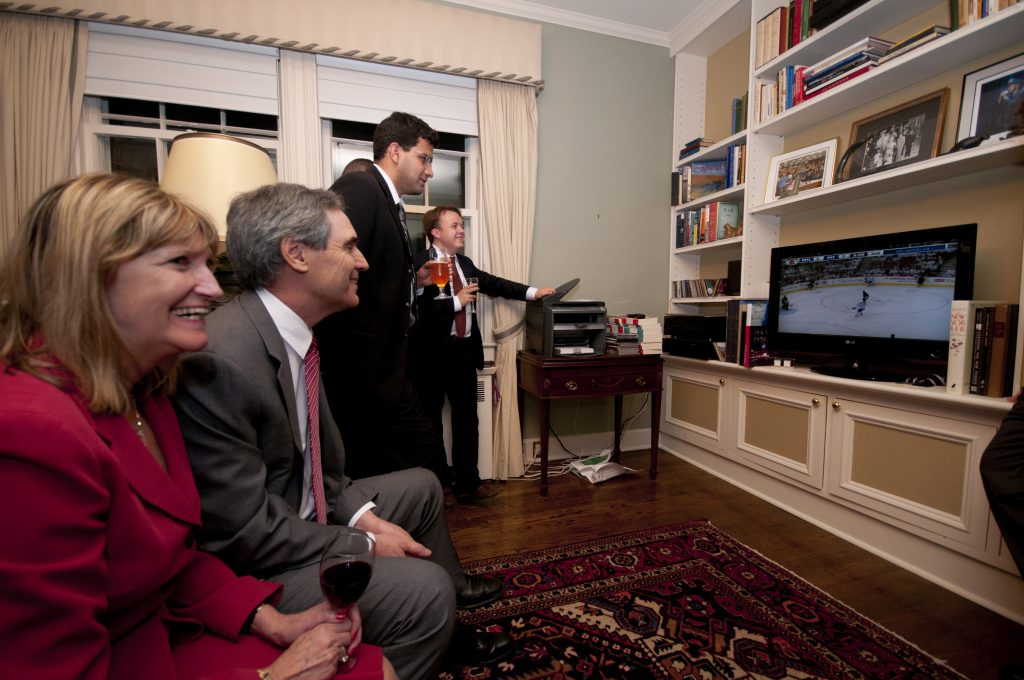

Franz Kafka goes to Disneyland
Every year at tulip time, I try to get out and photograph the tulips. In Ottawa, the two nicest seasons, spring and autumn, are also the shortest. The fall colours last a few weeks, but the spring tulips last mere days.
One view I especially like is looking across the Ottawa River towards the Parliament Buildings from a tulip bed just below the Museum of Civilization on the Gatineau (Hull), Quebec side of the river. There’s a plaque there honouring Malak Karsh, the late photographer who produced spectacular colour images of Ottawa.
One evening after work I headed down there, impressed by the changing light as storm clouds moved in, but sun and blue sky kept emerging from behind them. I set up my tripod and tried a number of shots, often using a neutral density graduated filter, which darkens the exposure of the sky at the top to balance the light better with the ground below. This is especially useful when, as that evening, the tulips in the foreground were in shade, but Parliament Hill is in sun. I also have a few coloured graduated filters, and I sometimes use a mauve one to give a slight fantasy look to the sky.
I took a few multiple exposures for HDR (high dynamic range), another technique used to overcome a wide range between light and dark in a scene. You take multiple identical shots at different exposures — typically I do five ranging from much too dark to much too light. These are then combined on a computer to create a scene where there are no dark silhouettes or white areas of blown-out light. I got a few images I liked.
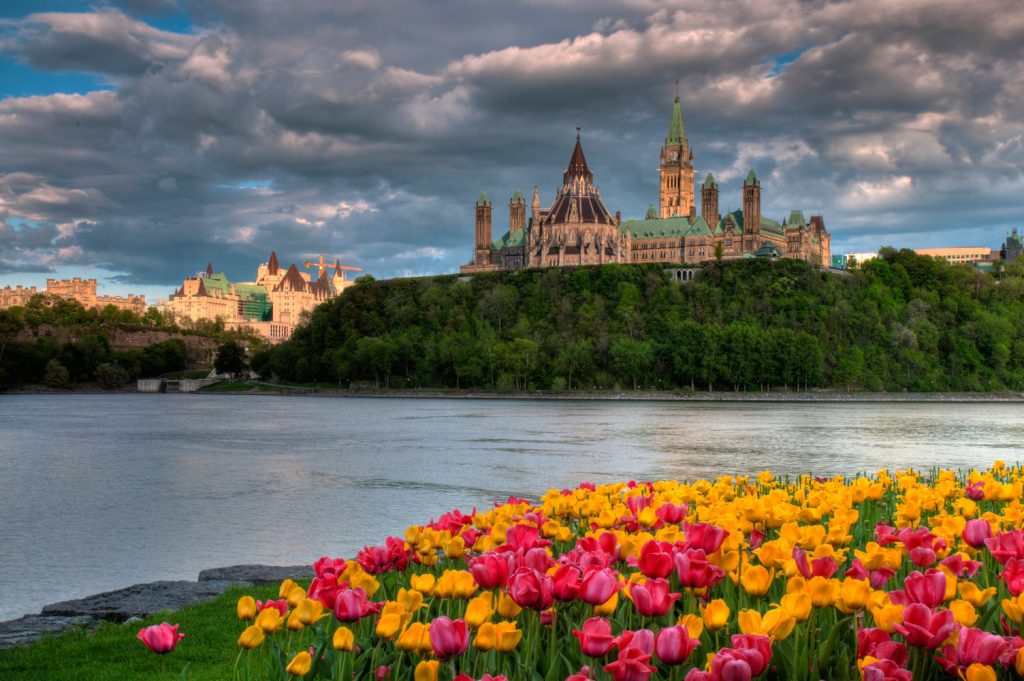
I also got a number of shots that were more ho-hum. One of these I had taken at five different exposures with the intention of doing an HDR. Suddenly, looking at one of the exposures, I got an idea. What if I showed the Parliament Buildings darker, as a silhouette, but lightened the rest of the scene just a little bit? It was one of the shots with the mauve graduated filter, so the sky had just a little bit of a dreamy mauve cast. I decided to play with a single image rather than do an HDR. I made only small tweaks — no fancy processing — and then I layered on the Parliament buildings from one of the darker exposures so they appeared as a silhouette. This was the result.
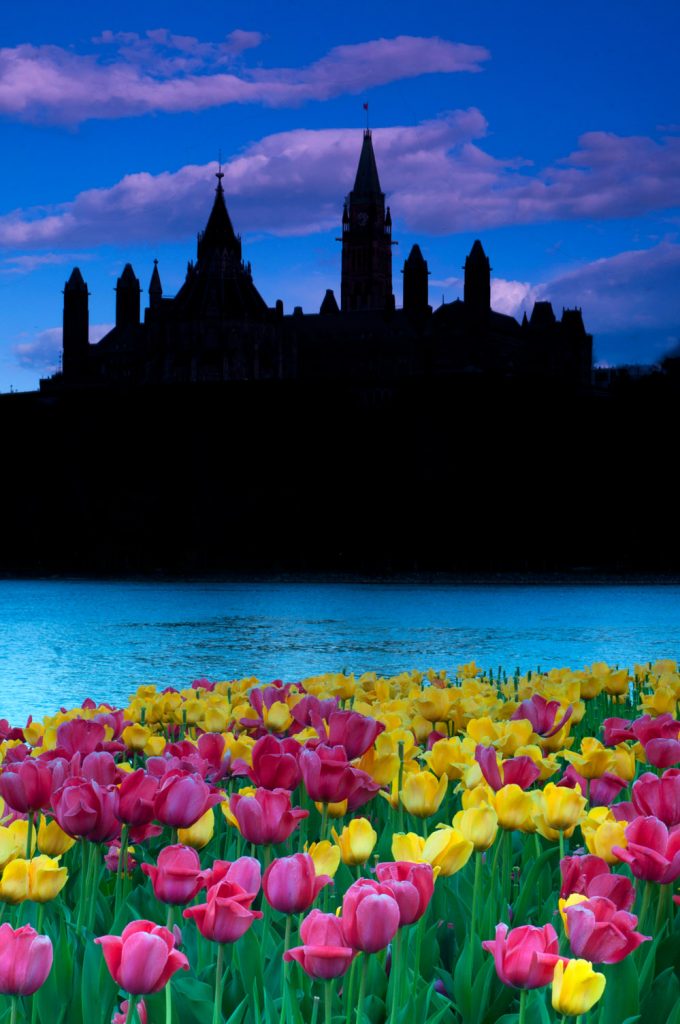
To many foreign viewers of my photos, our Parliament buildings often suggests a castle, with their neo-gothic architecture. I imagined a sinister castle, perched on a hill, the home of frustrating bureaucrats. It reminded me of Franz Kafka’s novel The Castle, which I read many years ago. Its about a surveyor who is never able to get satisfactory answers from the bureaucrats in the castle, who bungle his case and cover up their mistakes. Sometimes the workings of our government seem very Kafkaesque.
In one of the Flickr photo groups, Critique 2, I suggested the Kafkaesque nature of the picture. One of the group members, a fan of Kafka, agreed as far as the castle went, though thought the garishly colourful tulips were out of place for Kafka.
“Maybe Kafka goes to Disneyland,” he suggested.
And yet, it’s one of the simpler shots. And despite the layering of the silhouette, it’s also one of the least processed of that day’s selections from the shoot. It’s hard to account for what people will like, but a simple image with interesting colours that evokes fantasy seems to be popular.

